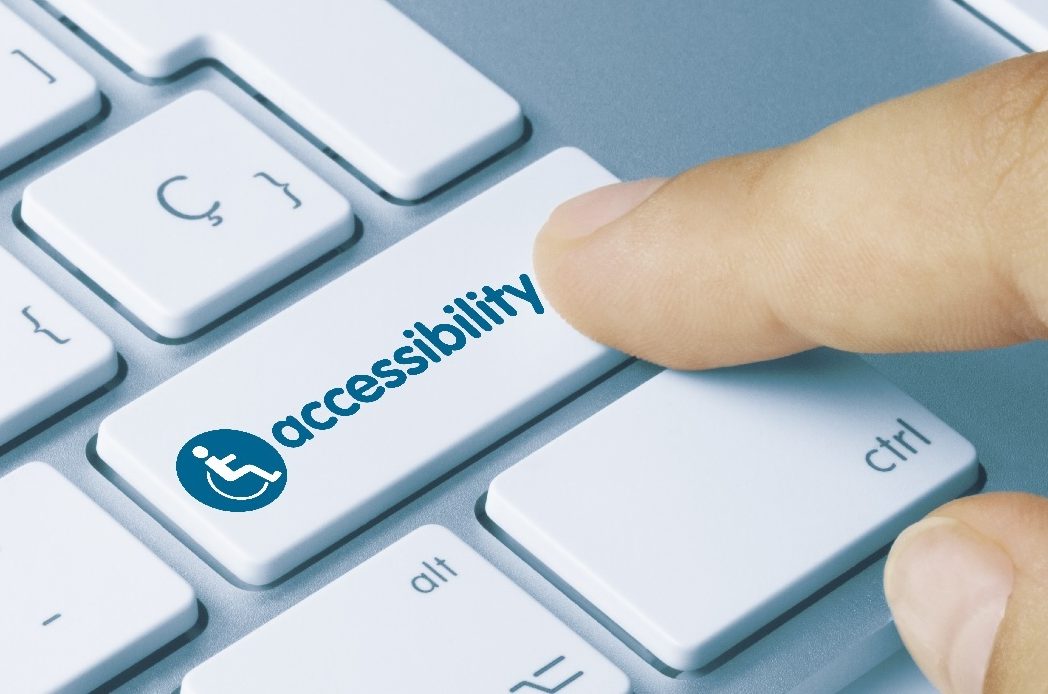In today's digital landscape, email is crucial for communication, marketing, and user account management. As more people, myself included, manage their emails on smartphones and tablets, ensuring email accessibility is vital for delivering a seamless and inclusive experience.
While I’ve touched on email accessibility before, this post focuses on the specific challenges faced by users of touch-based mobile screen readers—a topic that is highly relevant for anyone involved in digital accessibility, accessible email design, and content strategy.
While this post focuses on mobile screen readers, these insights are part of a broader exploration of digital accessibility that I've detailed in my new eBook for UsableNet, Accessibility Insights: A Screen Reader User’s Guide. If you like my blogs and writing, please check it out!
3 Common Mobile Email Accessibility Challenges
1. Unsubscribing from Emails
Unsubscribing from emails should be simple for users. However, this process can become frustratingly complex for touch-based screen readers. Many emails contain several items at the bottom—unsubscribe links, social media shortcuts, physical addresses, and more. Unfortunately, some screen readers interpret these items as a single block, making it impossible to interact with individual elements. This issue disrupts the user experience and highlights the importance of designing with accessibility best practices in mind.
These issues highlight the importance of considering accessibility in email design. For more insights on the real-world impact of email accessibility, read about Is That Email Accessible? My Experience as a Blind Customer.
Suggested Best Practice for Designers and Developers: Ensure each element in the email footer is coded as a distinct, interactive item. This allows screen readers to recognize and navigate them separately, making it easier for users to take action.
2. Navigating Text in Emails
Text-based emails are generally more accessible, but issues arise when navigation is hindered by inconsistent screen reader behavior. For example, when using a one-finger swipe to move through the text, a screen reader might skip elements that are otherwise accessible by direct touch. This disrupts the logical flow of reading, especially in marketing newsletters that must be read sequentially to be fully understood.
Suggested Insight for Content Strategists and UX Designers: To ensure a smooth reading experience, design emails with a clear, linear text flow. This approach may minimize confusion.
For more comprehensive guidance on creating accessible mobile experiences, download our guide, Inclusive Design Principles Applied to Mobile.
3. Handling Coupons and Promotion Codes
Marketing emails frequently distribute discount codes, often embedded in images or decorative graphics, making them inaccessible to screen readers. Even when a screen reader can read the code aloud, copying it might pull over the entire graphic, rendering it unusable on checkout pages. This issue affects the accessibility of promotional offers and the overall effectiveness of email marketing campaigns.
Suggested Recommendation for Email Marketing Managers and Web Developers: Include coupon and promotion codes as plain text within the email body. This ensures users can easily copy and paste the codes, enhancing their experience and driving engagement with your campaigns.

The Importance of Mobile Email Accessibility
Ensuring proper email accessibility on mobile devices is crucial for delivering a unified digital experience. Explore our comprehensive guide on web accessibility to understand how to implement these practices as part of your accessibility initiative.
As emails continue to be a cornerstone of digital communication, it’s vital that everyone—regardless of ability—can fully engage with their content. By addressing accessibility challenges, we can create a more inclusive digital environment that benefits people of all abilities.
For detailed guidance on structuring and designing accessible emails, check out the blog Best Practices for Structuring and Designing Accessible Emails.
For the Accessibility experts reading this, what additional steps do you recommend for ensuring that emails are fully accessible across all devices?
To my fellow screen reader-reliant peers: Have I missed any challenges you frequently encounter when interacting with emails on mobile devices? I’d love to hear about your experiences and any tips you might have for overcoming these obstacles.
As we move toward designing with digital accessibility in mind, we enhance user satisfaction and support broader business goals, from improving customer retention to strengthening brand loyalty. By making digital content equally accessible on all devices, we contribute to a more inclusive and effective digital ecosystem.
Want to see accessibility in action?
Don’t miss our upcoming webinar, 'How a Blind Person Uses a Website,' where you’ll gain firsthand insights into the real-world challenges and solutions in digital accessibility. Reserve your spot now! to reserve your spot.
Editor's Note: Our frequent contributor, Michael Taylor, wrote this post, which reflects his opinions and experiences. You can read more about Michael and other posts on his experience online here.








